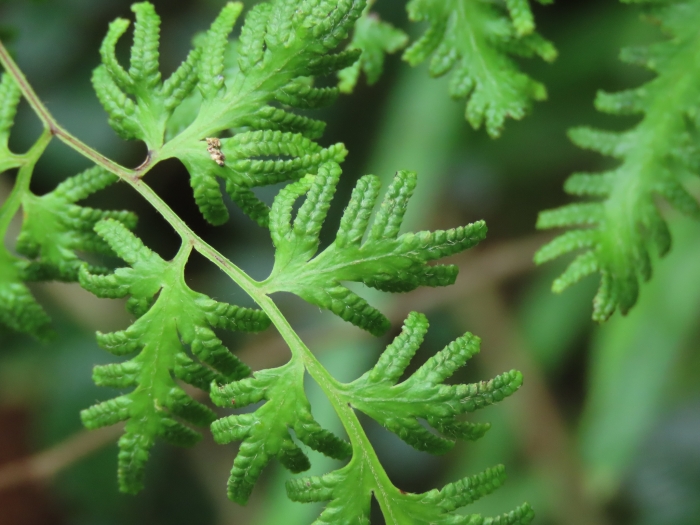Japanese Climbing Fern
(Lygodium japonicum)
Japanese Climbing Fern (Lygodium japonicum)
/
/

chiuluan
CC BY 4.0
Image By:
chiuluan
Recorded By:
Copyright:
CC BY 4.0
Copyright Notice:
Photo by: chiuluan | License Type: CC BY 4.0 | License URL: http://creativecommons.org/licenses/by/4.0/ | Rights Holder: chiuluan | Publisher: iNaturalist | Date Created: 2021-08-16T15:02:55-07:00 |
















































Estimated Native Range
Summary
Lygodium japonicum, commonly known as Japanese Climbing Fern, is a perennial vining fern that can be evergreen or deciduous depending on the climate. It is native to moist forests and swampy areas in East Asia and Southeast Asia, including Japan, China, and Korea. This fern typically grows to lengths exceeding 30 meters (98 feet) when supported by other vegetation. Its leaves, or fronds, are unique in that they have vine-like rachises which enable the plant to climb. The fronds are divided into two types of leaflets: sterile and fertile. Sterile leaflets are lance-shaped, while fertile ones are intricately divided and fringed, bearing sporangia along the edges. Lygodium japonicum reproduces through spores and spreads vegetatively via underground rhizomes.
This fern is valued for its ability to cover unsightly areas and is used for green walls, trellises, and arbors. It is adaptable to a wide range of light conditions, from full sun to full shade, and can tolerate various water levels and soil types, making it a versatile plant for cultivation. However, it can be potentially invasive outside its native range, so caution is advised. In areas where it is not invasive, it can provide a lush, tropical appearance to gardens. Gardeners should be aware of its aggressive growth and potential to overtake other plants.CC BY-SA 4.0
This fern is valued for its ability to cover unsightly areas and is used for green walls, trellises, and arbors. It is adaptable to a wide range of light conditions, from full sun to full shade, and can tolerate various water levels and soil types, making it a versatile plant for cultivation. However, it can be potentially invasive outside its native range, so caution is advised. In areas where it is not invasive, it can provide a lush, tropical appearance to gardens. Gardeners should be aware of its aggressive growth and potential to overtake other plants.CC BY-SA 4.0
Plant Description
- Plant Type: Fern, Vine
- Height: 15-90 feet
- Width: 15-30 feet
- Growth Rate: Moderate
- Flower Color: N/A
- Flowering Season: Non-Flowering
- Leaf Retention: Deciduous
Growth Requirements
- Sun: Part Shade
- Water: Medium
- Drainage: Fast, Medium, Slow
Common Uses
Deer Resistant, Drought Tolerant, Water Garden
Natural Habitat
Moist forests and swampy areas in East Asia and Southeast Asia
Other Names
Common Names: Vine-Like Fern , Japansk Klätterbräken , Kani-Kusa , Tsuru-Shinobu , 실고사리 , 海金沙
Scientific Names: Lygodium microphyllum , Lygodium japonicum , Lygodium japonicum var. microstachyum , Lygodium microstachyum , Lygodium japonicum f. elongata , Hydroglossum japonicum , Lygodium tenue , Lygodium finlaysonianum , Lygodium microstachyum var. glabrescens , Adiantum scandens
GBIF Accepted Name: Lygodium japonicum (Thunb.) Sw.